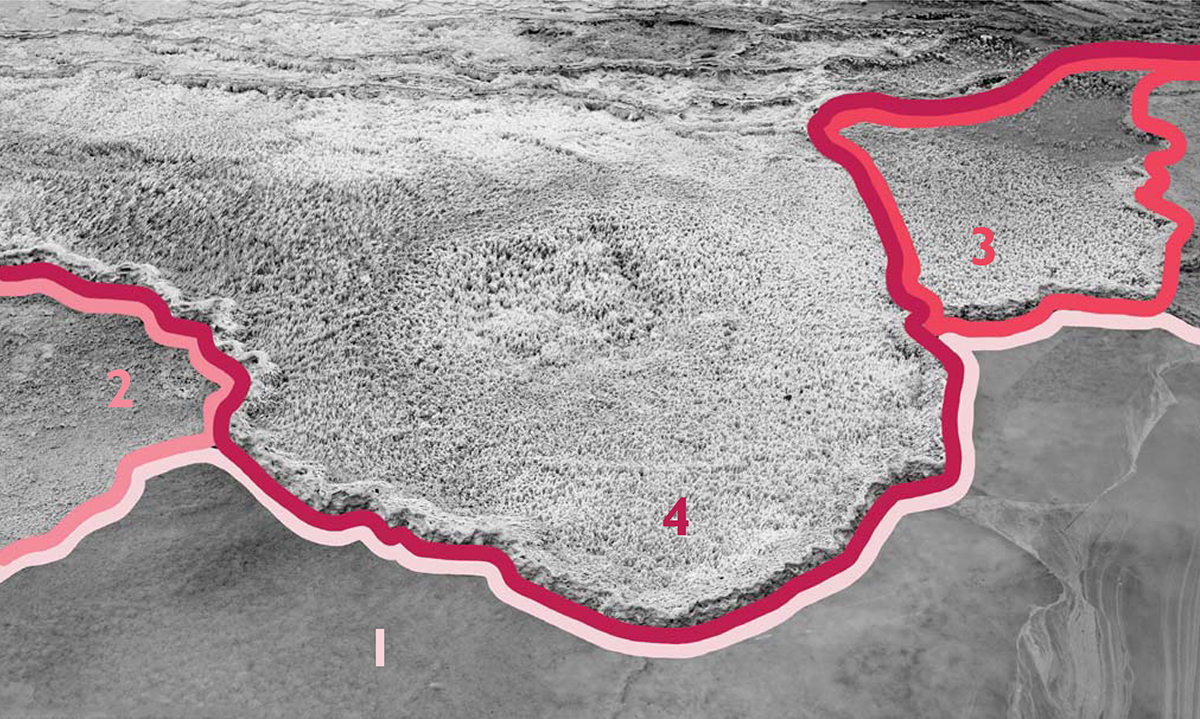
Sketch layering order
Texture gives a lot of interest to a piece of artwork. There are many ways to create texture. I use texture mediums, sometimes mixed with paint, as well as texturing tools to approximate the texture I see in my inspiration photos. I also work with multiple layers. When I look at a photo, I mentally take it apart so I can number the steps in the order I will use for each layer.

Sketch layering order
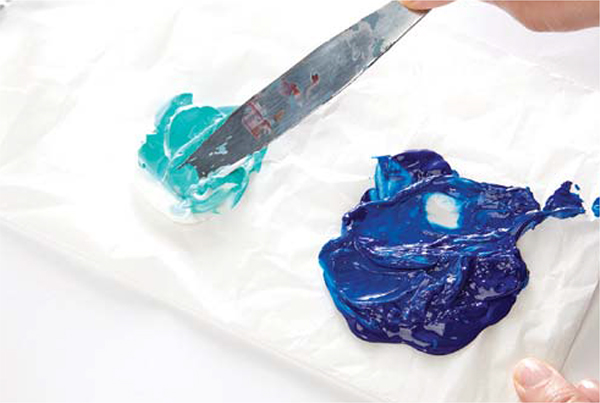
1 Apply two mounds of Gloss Heavy Gel medium onto your palette. Use a palette knife to mix blue acrylic paint into one. Clean the knife and mix teal paint into the other.
The ratio of gel medium to paint depends on the kind of paint you’re using (less paint if it’s highly pigmented). The goal is to create textured paint, not a translucent glaze. The amount of gel medium and paint needed will also depend on the size of your substrate.
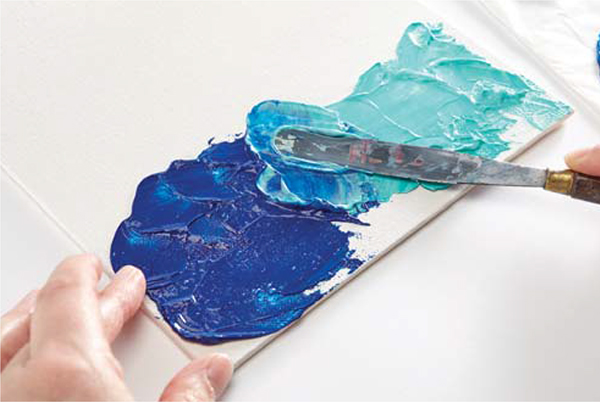
2 Apply the colors side-by-side on the substrate, allowing them to blend where they meet.

3 Roll a rubber brayer through the paint to spread it out, but keep your wrist loose and apply very little pressure to the brayer. This will create a rippling effect and keep a lot of the texture. Think of it like lifting peaks when icing a cake. Let it dry.

4 Mix some Natural Sand medium with Unbleached Titanium acrylic paint.
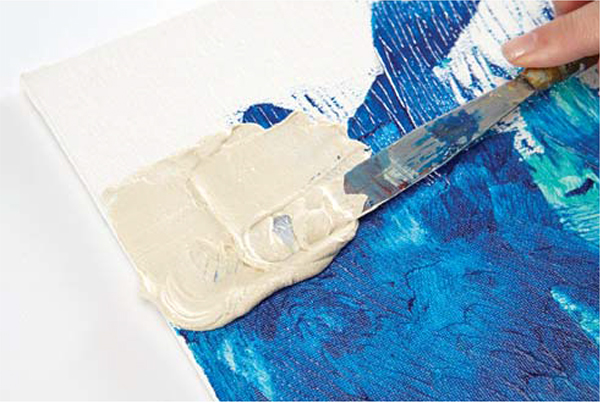
5 Apply the mix with a palette knife, pushing toward the edge while lifting and pushing the knife to get a staggered texture effect. Let it dry.
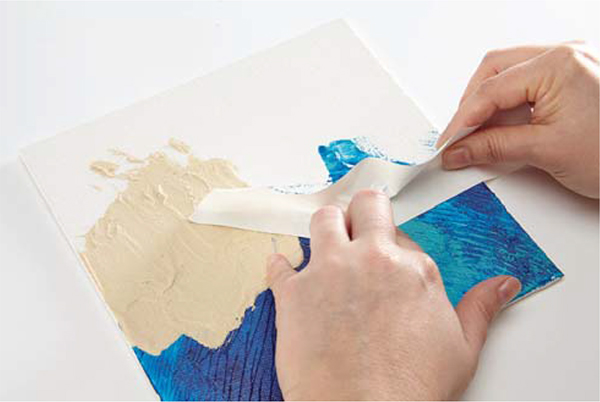
6 Create a dam using artist tape. Fold the tape lengthwise and secure half to the substrate in a wavy form. Leave the other half folded upright as the retaining wall.

7 Scoop some of the Ceramic Stucco onto a palette knife and apply it in layers using the dam as a border against which to build up the texture. Remove the artist tape while the Ceramic Stucco is still wet. Let it dry.
Note that heavier mediums require more time to cure. Drying time will also depend on the current climate and how thickly they are applied.
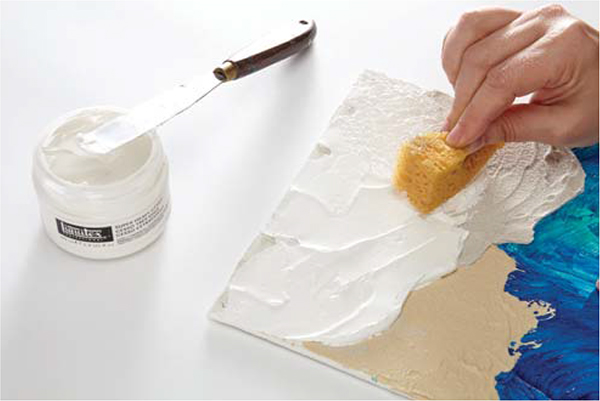
8 Apply Super Heavy Gesso with a palette knife and spread it out in the desired area. Use a piece of household sponge to pounce into the wet Super Heavy Gesso, creating a bubbly texture like the sea foam of a wave crashing on the beach. Work fast and use very little hand pressure. Let it dry (this can take twenty-four hours or more).
Acrylic gels and primers are great for creating the desired texture in your artwork. Many different acrylic paint manufacturers offer a wide range of acrylic gels and primers, with a variety of different names. The durability of your artwork is important. Using the right medium for the right application ensures that undesired cracks, chipping, yellowing or adhesion problems do not occur over time. All of the mediums can be used as they are and painted over with acrylic paint, or the acrylic paint can be mixed in. When mixed with a medium, paint colors may change. For predictable results be sure to take time to experiment. (Or embrace the unpredictable!)
Wet acrylic gels and other primers
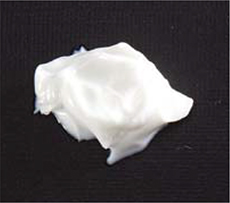
1. Gel Medium
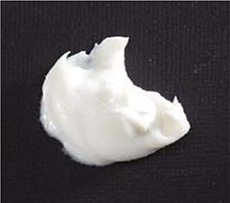
2. Natural Sand
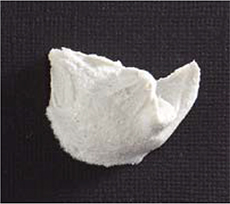
3. Ceramic Stucco
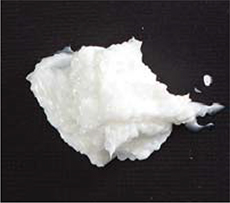
4. Glass Beads
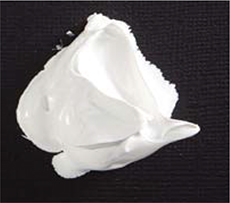
5. Super Heavy Gesso
Gel mediums are essentially acrylic paints without pigments (colorless acrylic paints). When wet they are milky-looking but they dry clear. If used correctly they can change the viscosity of acrylic paint without changing the binding of the paint to the surface or the color. They exist in glossy and matte finishes, and their usage depends on the desired sheen. They also come in different bodies ranging from a normal thick gel consistency to heavy to super heavy. The thicker and heavier the medium, the more marks and peaks can be created with brushes, palette knives and other tools, and the better these marks and peaks will remain visible.
Natural Sand is a fine texture gel that dries to look like the surface of semi-wet beach sand. It can be used to create delicate marks and texture or as a ground for pastels and charcoal.
Ceramic Stucco is a fine texture gel that has the surface finish of an Italian fresco. It dries to a light gray. It is also a great ground for pastels and charcoal and can be mixed with acrylic paint, creating a slightly grayed-down tone of the color.
Glass Beads is a medium-bodied gel that contains plastic micro beads that give it a consistency similar to coarse sea salt. It dries clear and reflective with a beady texture. When mixed with acrylic paint, it loses some of its reflective properties upon drying.
Gesso seals and primes porous surfaces and is the perfect ground for acrylic paint. The most common gesso is white, but gesso is also available in black and clear. You can mix acrylic paint with gesso to create a colored ground; mix clear with white for a tinted ground; or black with white for a grayed-down ground. Gesso also comes in different viscosities depending on the brand. You can find smooth, creamy gesso (the standard) as well as heavy and even super heavy gessoes for thick impasto and more sculptural effects.
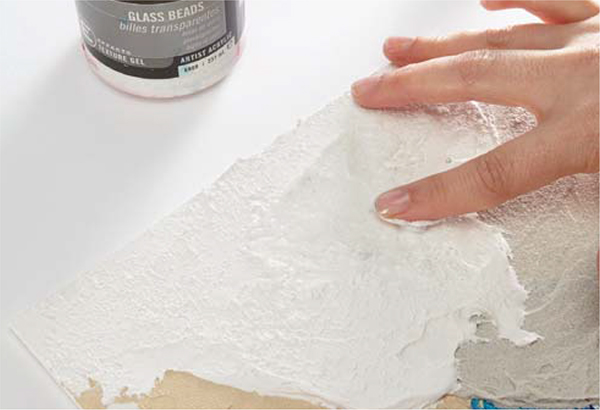
9 Spread Glass Beads medium over selected areas of the dried surfaces to add sparkle, like sun glinting off of a wet beach. Use your finger to make sure the beads are evenly distributed and dispersed, and to ensure that the reflective quality remains. Let it dry.
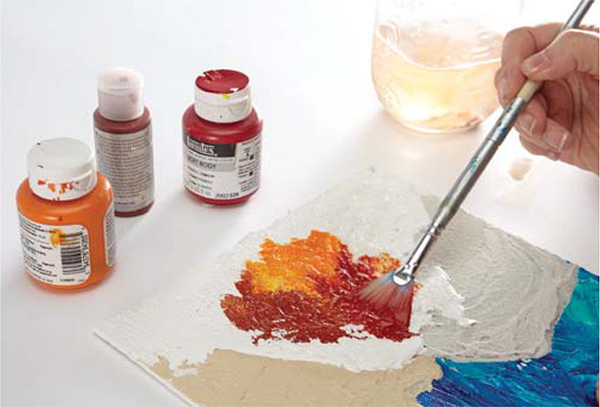
10 Apply a small amount of red, orange and Raw Sienna paint with a wet fan brush. Let the paint set for a couple of minutes, but do not let it dry all the way.
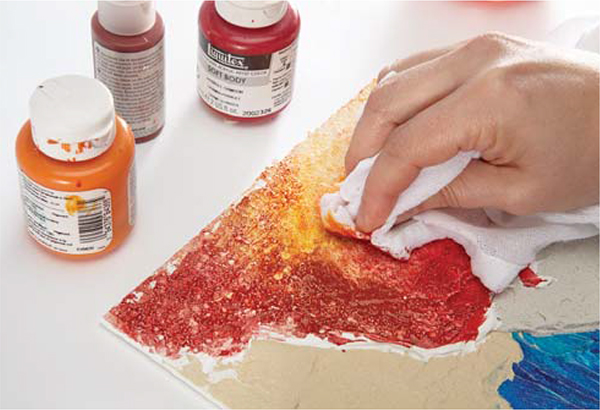
11 Use a damp rag to take off some of the paint, revealing the white texture underneath. Let it dry.

DON’T TOUCH
Nathalie Kalbach
Acrylic mediums and paint on canvas
16" × 12" (41cm × 30cm)
Inspired by geysers at Yellowstone National Park. Uses the techniques demonstrated in this chapter.